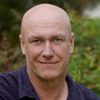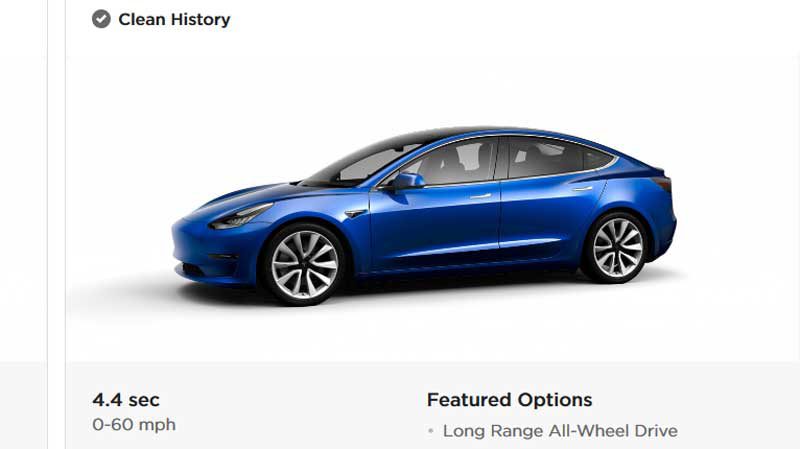Electric car maker Tesla has posted another loss in the June quarter – bigger than some estimates but much less than the last quarter – but says it is sitting on the biggest pile of cash it has ever had, and is now ready to roll out production of its prized EVs in China, and get to work on the Model Y SUV.
Tesla posted a quarterly loss of $UA408 million, ($A581 million) but perhaps the key metric for Tesla watchers, and the Tesla haters short selling it on the bet the company must and will fail, is that it did not bleed cash in the quarter.
In fact, it had an operating cash flow of $US614 million (less capital expenditure), which combined with a $US2.4 billion convertible bond raising leaves it with $US5 billion ($A7.1 billion) in the kitty.
“(This is) the highest level in Tesla’s history,” the company said. “This level of liquidity puts us in a comfortable position as we prepare to launch Model 3 production in China and Model Y production in the US.”
CEO, co-founder and biggest shareholder Elon Musk, seems happy enough.
 In the quarterly earnings call with analysts and small shareholders on Thursday morning (Sydney time), Musk said the company will be “free cash flow positive” in the coming quarter, meaning it will be self-funding. He expects the company to be “break-even” as far as profits go this quarter, and profitable the next.
In the quarterly earnings call with analysts and small shareholders on Thursday morning (Sydney time), Musk said the company will be “free cash flow positive” in the coming quarter, meaning it will be self-funding. He expects the company to be “break-even” as far as profits go this quarter, and profitable the next.
He underlined just how remarkable this is for an upstart company that has almost single-handedly turned the motoring industry on its head, and is leading the charge (quite literally) to emissions free transport.
Musk pointed to the previously announced deliveries of more than 95,000 vehicles, including 75,000 for the best-selling Model 3, and the fact that this was nearly double the deliveries in the same quarter as last year.
This is unprecedented, Musk said, and added that it a feat of a scale that is not widely appreciated.”This might be the fastest that any complex manufactured item has grown in history,” Musk told the earnings call.
“Tesla is almost doubling all cumulative production every year. This is a totally mad thing thing. To make as many cars in a year as we have in our entire history and to have that be an ongoing trend.
“It’s difficult for people to really feel an exponential. We didn’t evolve to feel an exponential. We can feel a linear, but we can only really understand an exponential at a cognitive level.”
Tesla is a substantial company. Despite recent stock price falls it retains a market capitalisation of more than $US46 billion ($A65 billion – much of those stock losses have been recovered), and in this last quarter it had total revenues of $US5.75 billion.
The Model 3 is selling so well it has out-sold all its competing petrol and diesel vehicles combined, Tesla says. The Model Y, an SUV version of the Model 3, will begin production in the next 12 months, production will soon begin in China at the Shanghai giga-factory, and then there will be a plant in Europe.
Musk noted that the Tesla “fleet” – the sum total of the cars it has made and delivered, doubled in the last 12 months. “Tesla is expanding at an exponential rate,” he said. “That’s about the cleanest exponential graph I have ever seen.”
The future, too, is looking more rosy. Musk expects that Model 3 and Model Y demand – and therefore production and deliveries, will be in the scale of two million units a year. The Model S and Y will account for around 80,000 to 100,000. The Tesla truck and the Tesla ute will also be available, but more like niche markets.
And Musk also hinted at plans to dramatically expand the battery storage business – known mostly for the so-called Tesla big battery at Hornsdale in South Australia, and for its domestic Powerwall and commercial Powerpack battery products.
Tesla plans to hold a “Battery and Powertrain Investor Day” – in such the same way as it did for autonomy earlier this year. The goal is to have a terawatt hour of battery storage per year. And then some.
“To make a fundamental shift in the world’s energy use – if we not in the terawatt hour range, it’s a nice news story but it is not fundamentally changing energy equation.”
So, perhaps then we will get to hear more about the “mega pack” – rumoured to be an installation in the megawatt hour range. But that was in November last year, so the chances are that the thinking has evolved since then.

Giles Parkinson is founder and editor of The Driven, and also edits and founded the Renew Economy and One Step Off The Grid web sites. He has been a journalist for nearly 40 years, is a former business and deputy editor of the Australian Financial Review, and owns a Tesla Model 3.

